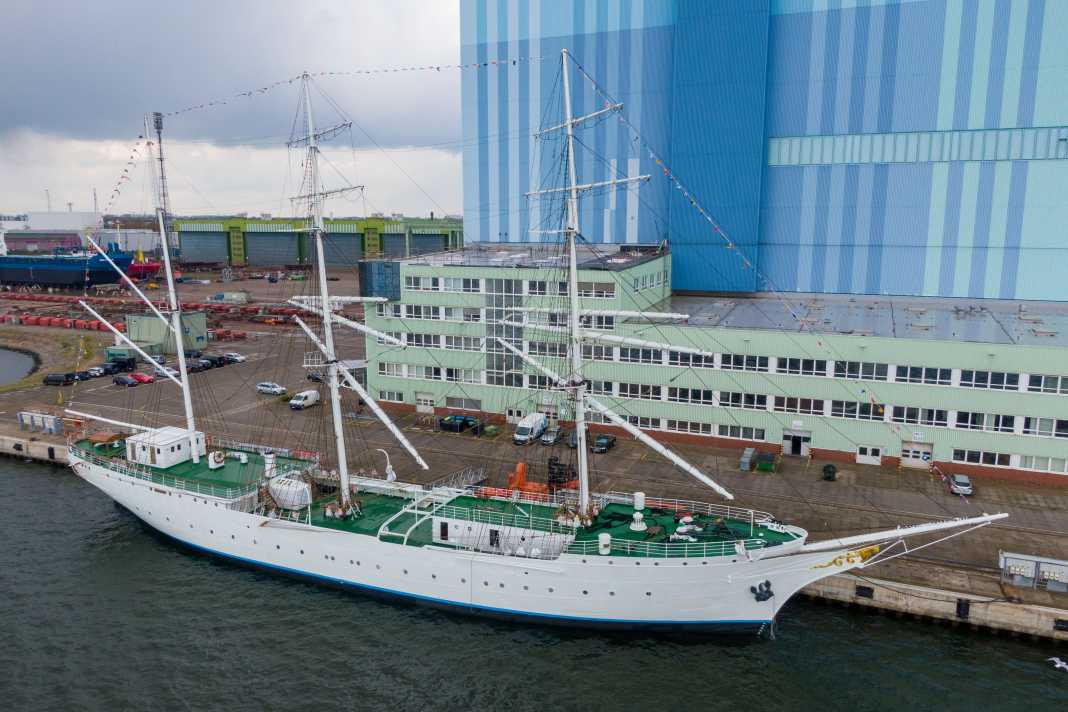




After twenty years as a museum ship, the "Gorch Fock" (I) was in urgent need of an overhaul to preserve its steel structure. This applied not only to the hull, but also to the deck and frames as well as the entire rigging. It cost 10.5 million euros to save the barque, which was launched in 1933.
10.5 million euros for the refurbishment
The majority of the sum, around 9.5 million euros, was provided by the European Union, the federal government and the state of Mecklenburg-Vorpommern. Stralsund's own contribution was provided - instead of the city - by the Tall Ship Friends association, which now owns the "Gorch Fock" (I) and will also cover the ongoing maintenance costs in future.
However, further support will be needed: The 82-metre-long traditional sailing ship is expected to require a further 13.5 million euros in investment funds for its interior refurbishment. The federal government is also being relied on here. At least the buoyancy is now guaranteed for another 25 years.
A design that set standards
The "Gorch Fock" (I) has been retired in the Hanseatic city since 2003 and has long since become a landmark on the Strelasund. However, the white barque also marks the beginning of a success story in sailing shipbuilding: named after the local Low German poet Gorch Fock, she was launched in 1933 at Blohm & Voss in Hamburg as the type ship of a specially developed new class of sail training ships for the navy.
Three more ships were launched in the following years, two like the "Gorch Fock" (I) under the swastika flag and another, the "Mircea", for Romania. The striking design with a clipper bow, a clear deck projection and a long poop deck turned out to be extremely successful in terms of its task. So successful, in fact, that the three originally German units went abroad as reparations after the end of the Second World War.
With the exception of the "Gorch Fock" (I), which was taken over by the Soviet Union and last served in the Ukrainian merchant navy under the name "Towarischtsch" before being sold privately and finally - no longer seaworthy - finding its way to Stralsund, the remaining three still sail as training ships: in addition to "Mircea", "Sagres" for Portugal and "Eagle" for the US Coast Guard.
A second "Gorch Fock" for the new navy
However, another sister was added later - and continued the name of the type ship to this day: the "Gorch Fock" (II), also built at the original shipyard in 1957 according to only slightly modified plans, became the training ship of the then newly founded German Navy. In addition to training, she also took on another important role: as a global "white ambassador" for the still young Federal Republic of Germany. Although much better known, her origins nevertheless go back to the veteran in Stralsund - which now shines just as brightly again after her refit.
